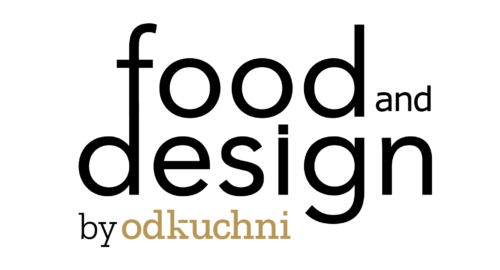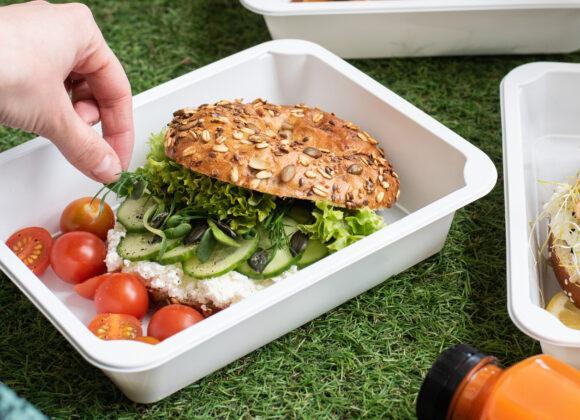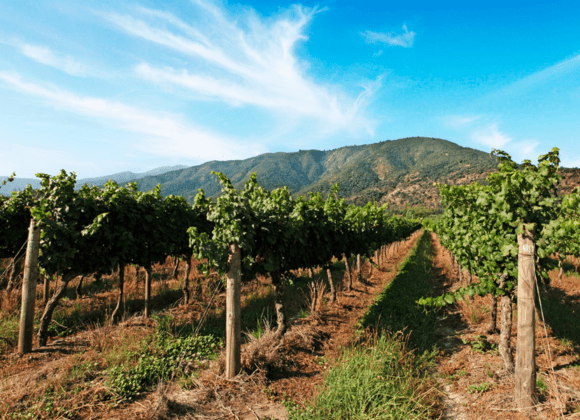Dziś niewielka część konsumentów zastanawia się, jak ogromną rolę odgrywa w naszym życiu opakowanie. A przecież właściwie każdy produkt trafiający do sprzedaży – nie tylko detalicznej – jest jakoś zapakowany; co więcej – opakowania stanowią znaczącą część globalnego przemysłu. Warto więc przyjrzeć się tworzywom, które najczęściej są wykorzystywane do ich produkcji. Jeśli ten temat jest Ci obcy, zachęcam do czytania!
Świadomość wszechobecnych opakowań
Na początku sprawdźmy więc, jak to wygląda w przypadku gum do żucia. Każdy z listków jest zapakowany w „papierek”, te osobne listki są wsunięte w banderolkę i zapakowane w „zbiorcze detaliczne” opakowania. One z kolei są często wystawione w displayu przy kasie, pełniąc funkcję zarówno opakowania półhurtowego, jak i ekspozytora półkowego. Zanim jednak trafią na tę półkę zakupów impulsywnych, są pakowane w karton zbiorczy z displayami, który to wyjeżdża z fabryki na palecie dystrybucyjnej. Niby tak niepozorny produkt, a otacza go masa opakowań.
Każde z nich odgrywa swoją rolę. Opakowania to nie tylko środek reklamy i komunikacji z konsumentem – to również komunikacja na każdym etapie „życia produktu” w drodze do nas, konsumentów. Palety, kartony zbiorcze, displaye, małe opakowania zbiorcze i jednostkowe, etykieta… – każde z nich stanowi zabezpieczenie produktu i źródło informacji o nim na każdym etapie dystrybucji. To nieuniknione, konieczne działania, które pomagają producentom zapewniać stałą jakość produktów oraz kontrolować ich drogę od momentu wyjścia z linii produkcyjnej, aż do dokonania zakupu przez konsumenta. Dają również pewność, że w przypadku wystąpienia jakichś nieprawidłowości możemy szybko i łatwo zidentyfikować niepożądaną partię produktów i wycofać ją z rynku, minimalizując straty i ewentualne zagrożenia dla naszego odbiorcy.
Stąd wynikają też dane, jakie przedstawiał Eurostat w 2020 roku: ilość odpadów opakowaniowych ze wszystkich materiałów przypadających na każdego mieszkańca EU to 177,2 kg rocznie; w Chorwacji to tylko 66 kg, a w Niemczech – aż 225,8 kg na mieszkańca. „Konsumujemy” zawartość wraz z jej opakowaniami – nawet jeśli nie wszystkie trafiają do nas, konsumentów, bezpośrednio, to jednak musimy pamiętać, że zużywamy ich dużo więcej, niż nam się wydaje.
Producenci w sidłach
Teoretycznie firmy produkcyjne mają nieograniczone pole do popisu w kwestii stosowania opakowań. Czy to prawda? Wprost przeciwnie!
Specyfika wytwarzanego produktu ustawodawczo ogranicza możliwości producenta co do stosowania pewnych surowców czy technik opakowaniowych. Wynika to oczywiście z dbałości o bezpieczeństwo konsumenta. Inne opakowania stosuje się do produktów sypkich, inne do płynnych, dodatkowo każdy z tych grup produktów ma jeszcze inne właściwości fizykochemiczne… W przypadku branży spożywczej wymagania te są bardzo wysokie – produkty potrzebują konkretnej bariery, która „ochroni” je przed otoczeniem, a przy tym pomoże zadbać o ich trwałość. W potocznej mowie branżowej określa się to m.in. mianem oddychania lub nieoddychania, przepuszczalności lub nieprzepuszczalności itd.
Kiedy już określimy surowiec, w który możemy zapakować dany produkt, do gry wchodzą inżynierowie konstruujący linie pakujące. Dziś większość produktów powstaje na skalę przemysłową, a przemysł wymaga maksymalnej automatyzacji. Niemniej jednak nakłady finansowe, które są do tego potrzebne, są bardzo wysokie, a ich zwrot często jest przeliczany na lata produkcji. Większość takich linii to rozwiązania powstające na indywidualne potrzeby producentów. Tym oto sposobem wpadamy w „sidła”, gdzie każda zmiana opakowania wiąże się z ryzykiem przebudowy linii lub nawet koniecznością opracowania kolejnej. Tkwiąc w tych sidłach, producenci nie są w stanie podążać za rozwojem technologii; tempo zmian opakowań nadają więc w zależności od stopnia zamortyzowania swoich linii. A bądź co bądź, te modyfikacje i tak są potrzebne, ponieważ wymuszają je ekonomia produkcji i końcowy konsument – w końcu to dla niego wytwarzamy produkt i jego opakowania.
Wiodące surowce
Wśród trendów, które możemy zaobserwować w branży opakowaniowej, na prowadzenie wysuwa się z pewnością wzrost udziału opakowań papierowych. Jest to spowodowane przede wszystkim:
- badaniami dotyczącymi obecności tworzyw sztucznych w organizmach żywych – zarówno przenikaniu ich do naszych ciał, jak i nieodwracalnych szkodach wynikających z ich obecności;
- rosnącą świadomością i poczuciem odpowiedzialności wśród społeczeństwa, niejako wymuszającym na producentach dobieranie bardziej ekologicznych i łatwiejszych do recyklingowania surowców – głównie papieru i jego pochodnych.
Papier niestety nie daje nam nieograniczonych możliwości, ale jest to nadal bardzo dynamicznie rozwijający się sektor opakowaniowy, którego charakterystyka wciąż ulega zmianie. Dla przykładu: dziś już częściej stosuje się papiery powlekane specjalnymi barierami dającymi jeszcze więcej możliwości zastosowań.
Część tych rozwiązań została opracowana jeszcze w ubiegłym wieku, po czym wyparły ją tworzywa sztuczne – tu warto wspomnieć np. o powleczeniach specjalnym woskiem, stanowiących barierę dla tłuszczy. Inna grupa to rozwiązania z ostatnich lat, które umożliwiają powlekanie papieru foliami celulozowymi, zapewniając tym samym barierę dla substancji płynnych. Wszystko wciąż się rozwija, a papier w znaczącym stopniu jest poddawany recyklingowi – to zdecydowanie dobra wróżba na przyszłość.
A co poza papierem? Z jakich innych surowców najczęściej korzystamy w przemyśle opakowaniowym?*
- papier i tektura – 41,2%,
- tworzywa sztuczne – 19,5%,
- szkło – 19,1%,
- drewno – 15,1%,
- metal – 5%.
W tym rankingu spodziewałbym się jednak zmiany – głównie w pozycji tworzyw sztucznych, które już dziś tracą na korzyść papieru i szkła. Myślę, że dużą rolę odegrają tu wpływy ustawodawcze, jak to zresztą miało już miejsce, chociażby w przypadku plastikowych sztućców czy patyczków higienicznych.
Bardziej ekologiczne, mniej ekonomiczne
Tworzywa sztuczne to jednak wciąż znacząca część rynku opakowań, a to przecież najmłodszy sposób pakowania produktów. Swój ogromny udział zawdzięczają:
- ekonomii wytwarzania – jest to stosunkowo tani surowiec w relacji do pozostałych;
- małej objętości i niskiej masie w stosunku do swojej konkurencji;
- łatwości formowania.
Aspekt ekonomiczny wciąż bierze więc górę nad ekologicznym i branża rok do roku notuje przyrost udziału tworzyw sztucznych w rynku opakowań (Raport Fundacji PlasticsEurope Polska, Branża tworzyw sztucznych 2022). Warto tu jednak zwrócić uwagę na firmy recyklingowe, które bardzo dynamicznie rozwijają recykling tych sztucznych materiałów, gospodarowanie nimi i przywracanie ich do obiegu – takie działania niewątpliwie przyczyniają się do ochrony środowiska i nas samych.
Oczywiście to nie wystarczy. Aspekt edukacji i budowa świadomości konsumenta są tu niesamowicie istotne. W końcu to my decydujemy o rozwiązaniach, jakie będą stosować producenci. Zasada „bardziej ekonomicznie, mniej ekologicznie” nie będzie się sprawdzać, jeśli konsumenci – podejmując świadome decyzje i działając na korzyść ekologii – nie będą wspierać produkcji bazujących na tworzywach sztucznych.
Zmiany na lepsze przychodzą wolno
Podsumowując to, co pisałem powyżej – zmiany na lepsze niewątpliwie wynikają z ogromnej pracy „odpowiedzialnej” części ludzkiej populacji. Przychodzą wolno, gdyż są skomplikowane i uzależnione od wielu czynników. Jeżeli konsekwentne działania zaczynające się u podstaw będą trwały, to oczekiwany efekt nastąpi.
Większość opakowań kończy swoje życie jako śmieć. To, jakie mamy śmieci i co z nimi zrobimy, zależy tylko od nas. Możemy nadać im drugie życie, wybrać te mniej szkodliwe, zmienić trend, odwrócić proces degradacji… Mamy wpływ na wszystko, co nas otacza; możemy edukować siebie i innych.
Dziś z całą odpowiedzialnością możemy stwierdzić, że rozpoczęliśmy trend świadomych wyborów. To one decydują o tym, jak zmieniać będzie się każdy przemysł, jak zmieni się jedna z jego gałęzi, a dynamika tych zmian będzie nabierać tempa. Myślę więc, że konsekwencja w ochronie środowiska wyprze najbardziej nieodpowiedzialne wybory i zminimalizuje do koniecznego minimum udział opakowań wytwarzanych z tworzyw sztucznych.
*Źródło danych: Raport Eurostat z 2020 roku










 Młodszy specjalista ds. komunikacji marketingowej i PR.
Młodszy specjalista ds. komunikacji marketingowej i PR.


 Absolwent Uniwersytetu Warszawskiego oraz Szkoły Głównej Gospodarstwa Wiejskiego. W branży HoReCa od ponad 10 lat. Przez lata związany z Grupą Trip, Sobienie Królewskie Golf and Country Club oraz restauracją Florentin w Warszawe.
Absolwent Uniwersytetu Warszawskiego oraz Szkoły Głównej Gospodarstwa Wiejskiego. W branży HoReCa od ponad 10 lat. Przez lata związany z Grupą Trip, Sobienie Królewskie Golf and Country Club oraz restauracją Florentin w Warszawe. Absolwentka Wydziału Architektury Politechniki Warszawskiej na kierunku Architecture for Society of Knowledge oraz Komunikacji Wizualnej na Politecnico di Milano. Specjalistka od budowania nastroju. Doświadczenie zdobywała w kraju i zagranicą podczas licznych warsztatów międzynarodowych (Sevilla, Lizbona, Florencja), stypendium na La Sapienza (Rzym) oraz pracując m.in. w Carmi e Ubertis i ADM Milano.
Absolwentka Wydziału Architektury Politechniki Warszawskiej na kierunku Architecture for Society of Knowledge oraz Komunikacji Wizualnej na Politecnico di Milano. Specjalistka od budowania nastroju. Doświadczenie zdobywała w kraju i zagranicą podczas licznych warsztatów międzynarodowych (Sevilla, Lizbona, Florencja), stypendium na La Sapienza (Rzym) oraz pracując m.in. w Carmi e Ubertis i ADM Milano.








 Menedżer z wieloletnim doświadczeniem w branżach kosmetycznej, spożywczej, dziecięcej. W trakcie swojej kariery związany z firmami takimi jak: L’Oreal, Samsung, Danone-Nutricia, Unilever. W ciągu swojego życia zawodowego odpowiadał między innymi za rozwój sprzedaży i contentu eCommerce w Polsce i krajach Europy Środkowo-Wschodniej.
Menedżer z wieloletnim doświadczeniem w branżach kosmetycznej, spożywczej, dziecięcej. W trakcie swojej kariery związany z firmami takimi jak: L’Oreal, Samsung, Danone-Nutricia, Unilever. W ciągu swojego życia zawodowego odpowiadał między innymi za rozwój sprzedaży i contentu eCommerce w Polsce i krajach Europy Środkowo-Wschodniej. 

























































